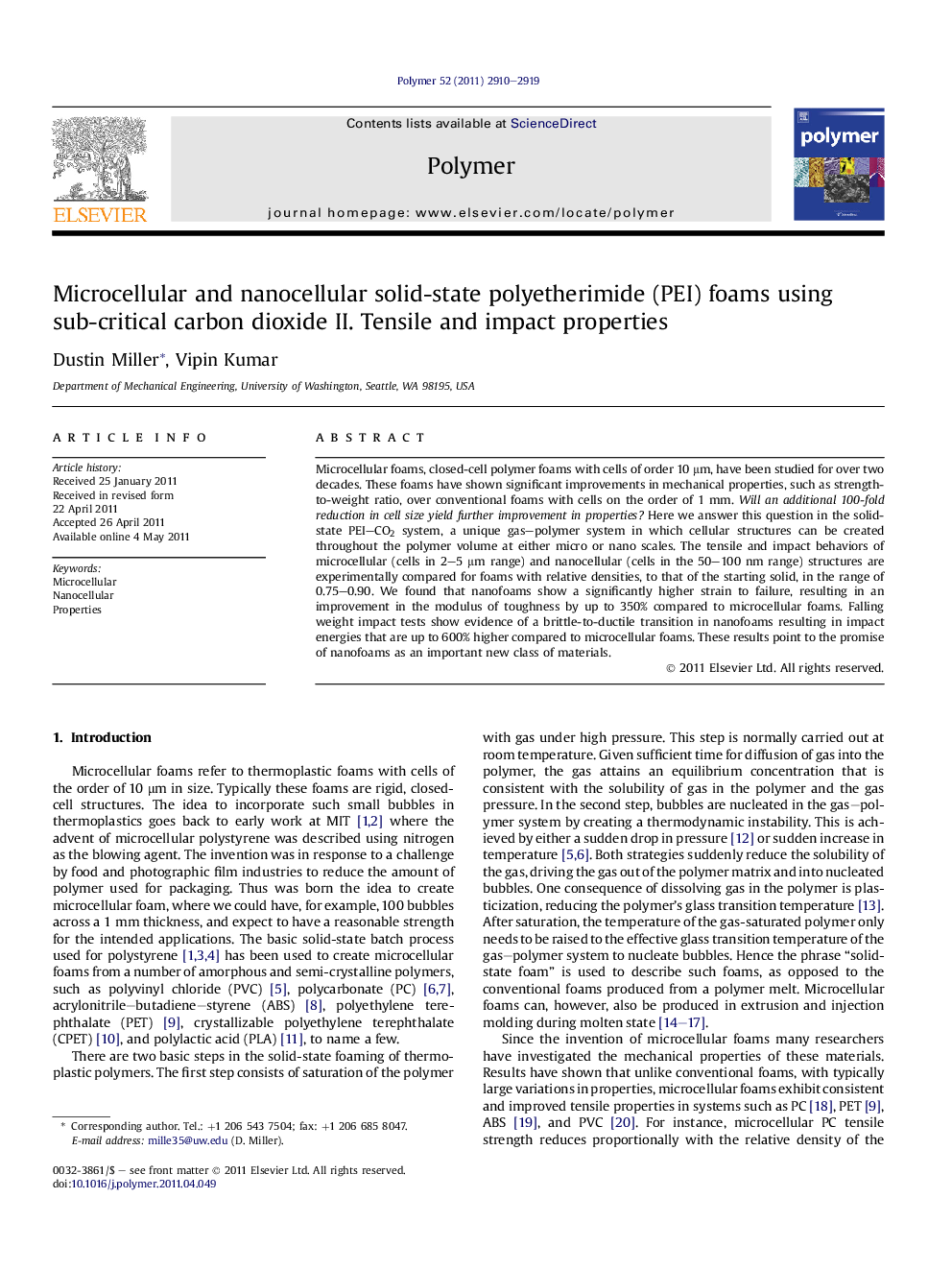| Article ID | Journal | Published Year | Pages | File Type |
|---|---|---|---|---|
| 5184766 | Polymer | 2011 | 10 Pages |
Microcellular foams, closed-cell polymer foams with cells of order 10 μm, have been studied for over two decades. These foams have shown significant improvements in mechanical properties, such as strength-to-weight ratio, over conventional foams with cells on the order of 1 mm. Will an additional 100-fold reduction in cell size yield further improvement in properties? Here we answer this question in the solid-state PEI-CO2 system, a unique gas-polymer system in which cellular structures can be created throughout the polymer volume at either micro or nano scales. The tensile and impact behaviors of microcellular (cells in 2-5 μm range) and nanocellular (cells in the 50-100 nm range) structures are experimentally compared for foams with relative densities, to that of the starting solid, in the range of 0.75-0.90. We found that nanofoams show a significantly higher strain to failure, resulting in an improvement in the modulus of toughness by up to 350% compared to microcellular foams. Falling weight impact tests show evidence of a brittle-to-ductile transition in nanofoams resulting in impact energies that are up to 600% higher compared to microcellular foams. These results point to the promise of nanofoams as an important new class of materials.
Graphical abstractDownload full-size image
